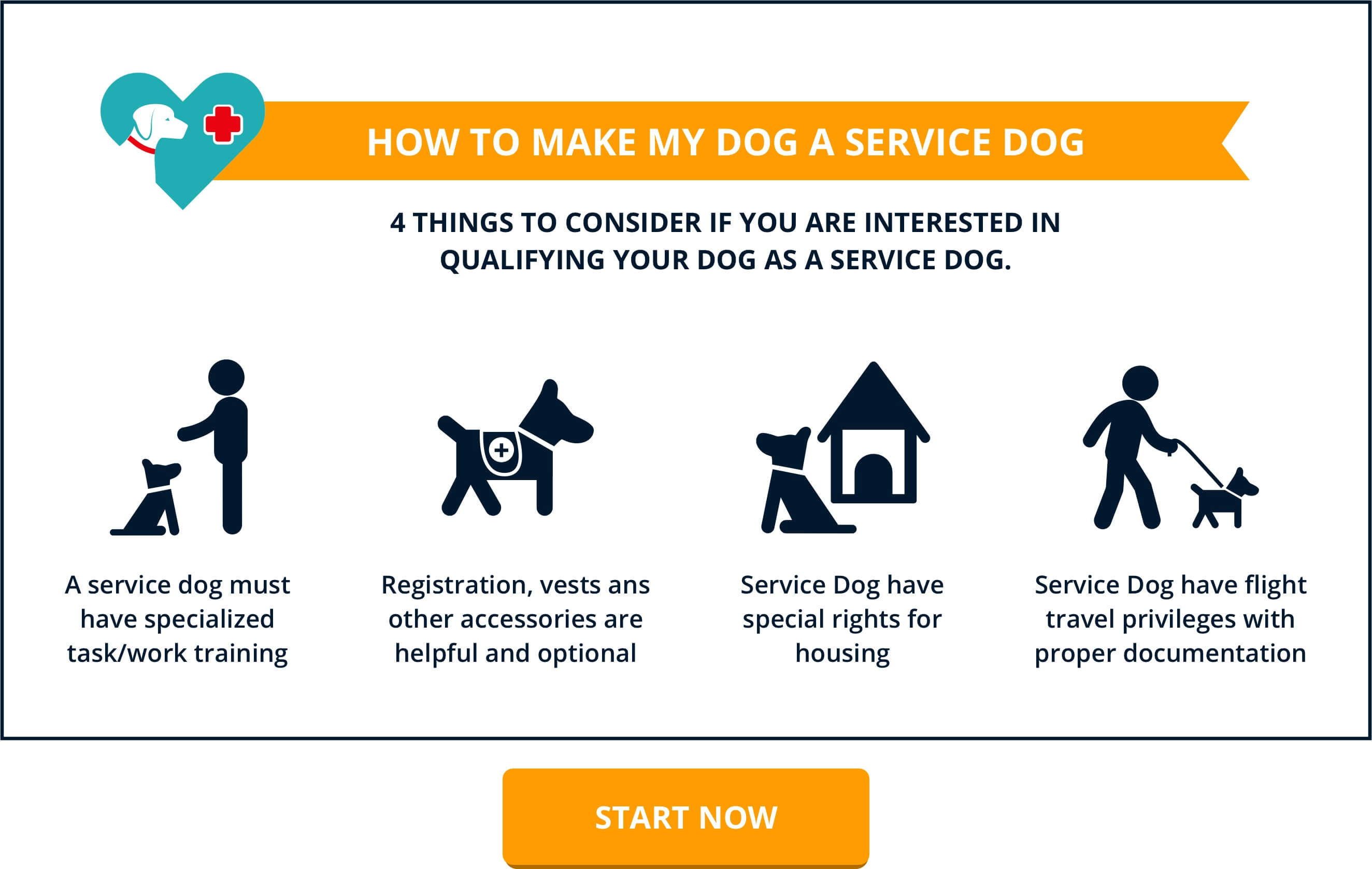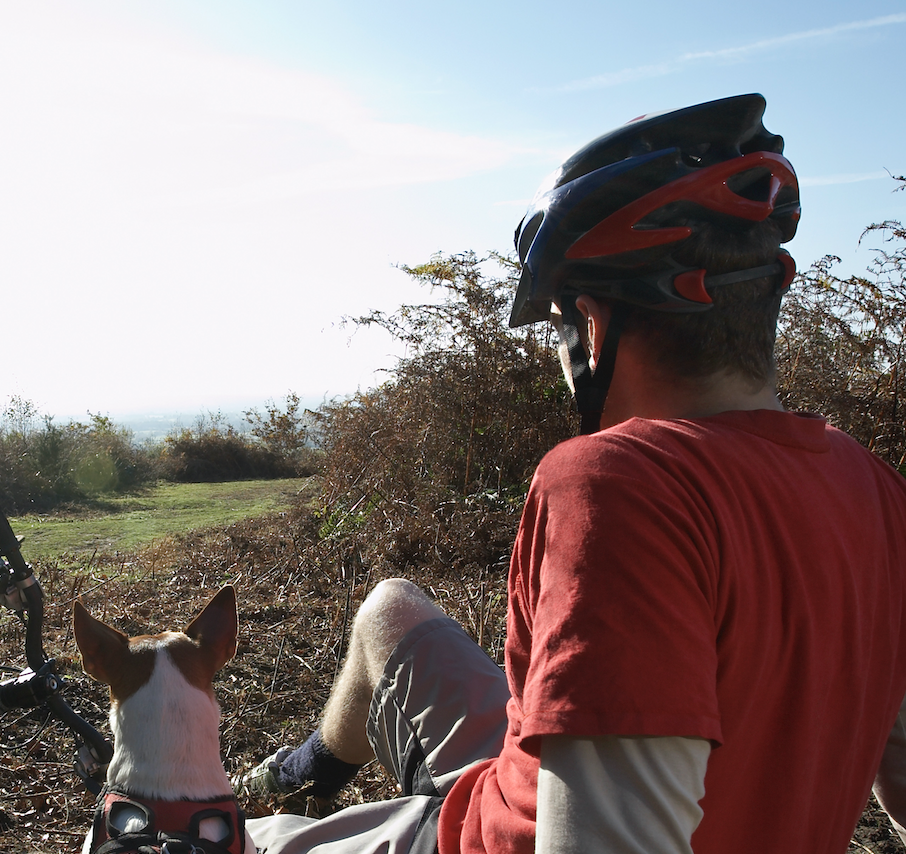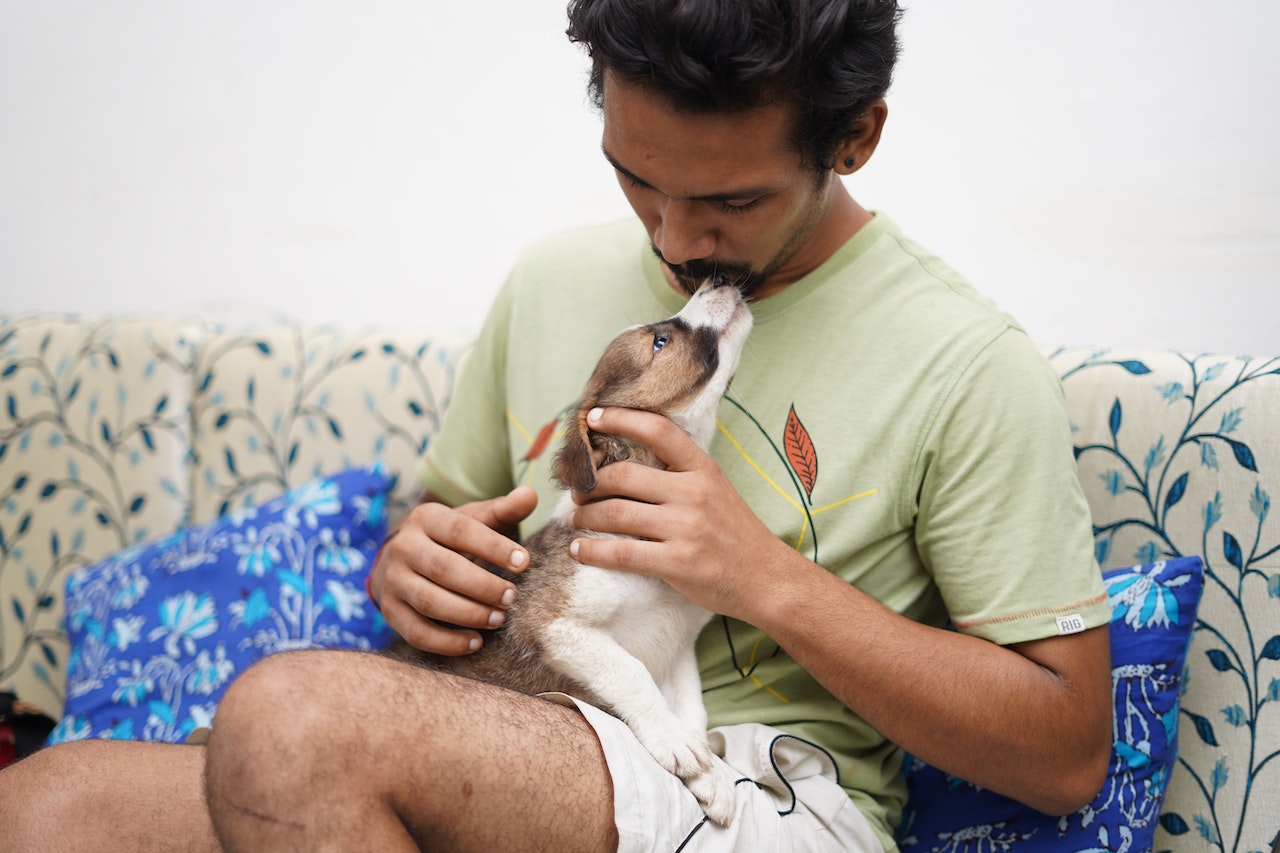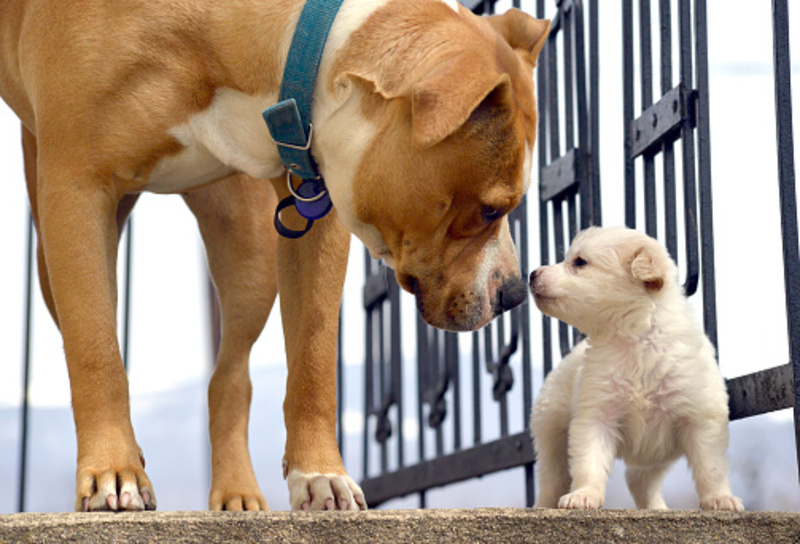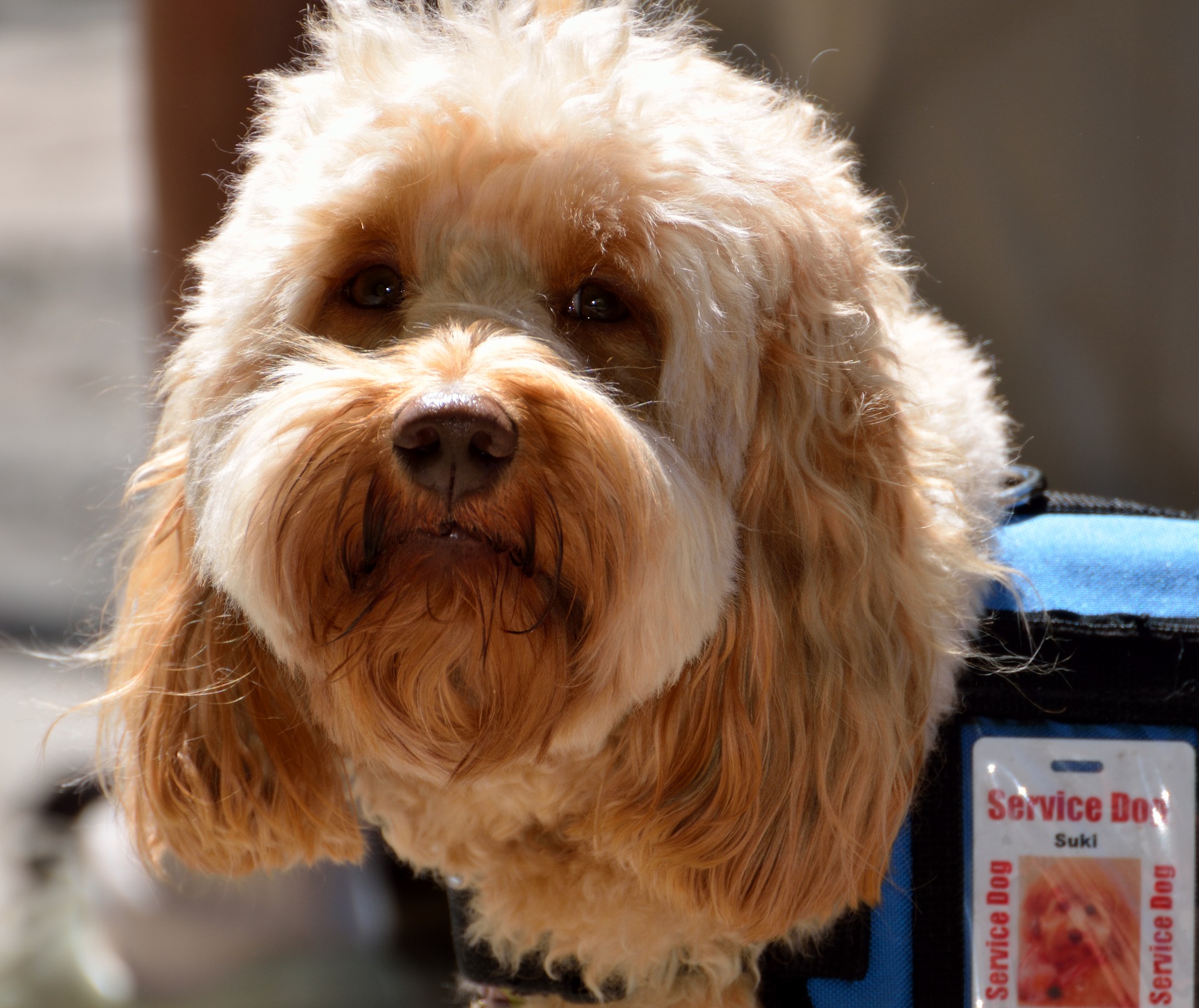
If you are in need of a Service Dog but are unable to get one from an organization due to costs or other problems, here is a short guide on what to know when training your own Service Dog.
What is a Service Dog?
Overall, a Service Dog is a working training that is specially trained to assist a person or group of people with specific needs. This could be a guide dog for blind people, or a psychiatric Service Dog trained to help people with PTSD (Post Traumatic Stress Disorder), major depressive disorder, etc. According to the ADA, Service Dogs are working animals, not pets.
The Difference Between a Service Dog and an Emotional Support Dog
As said before, a Service Dog is trained to perform tasks to help its owner with a disability or mental illness. Service dogs are also allowed in most public areas.
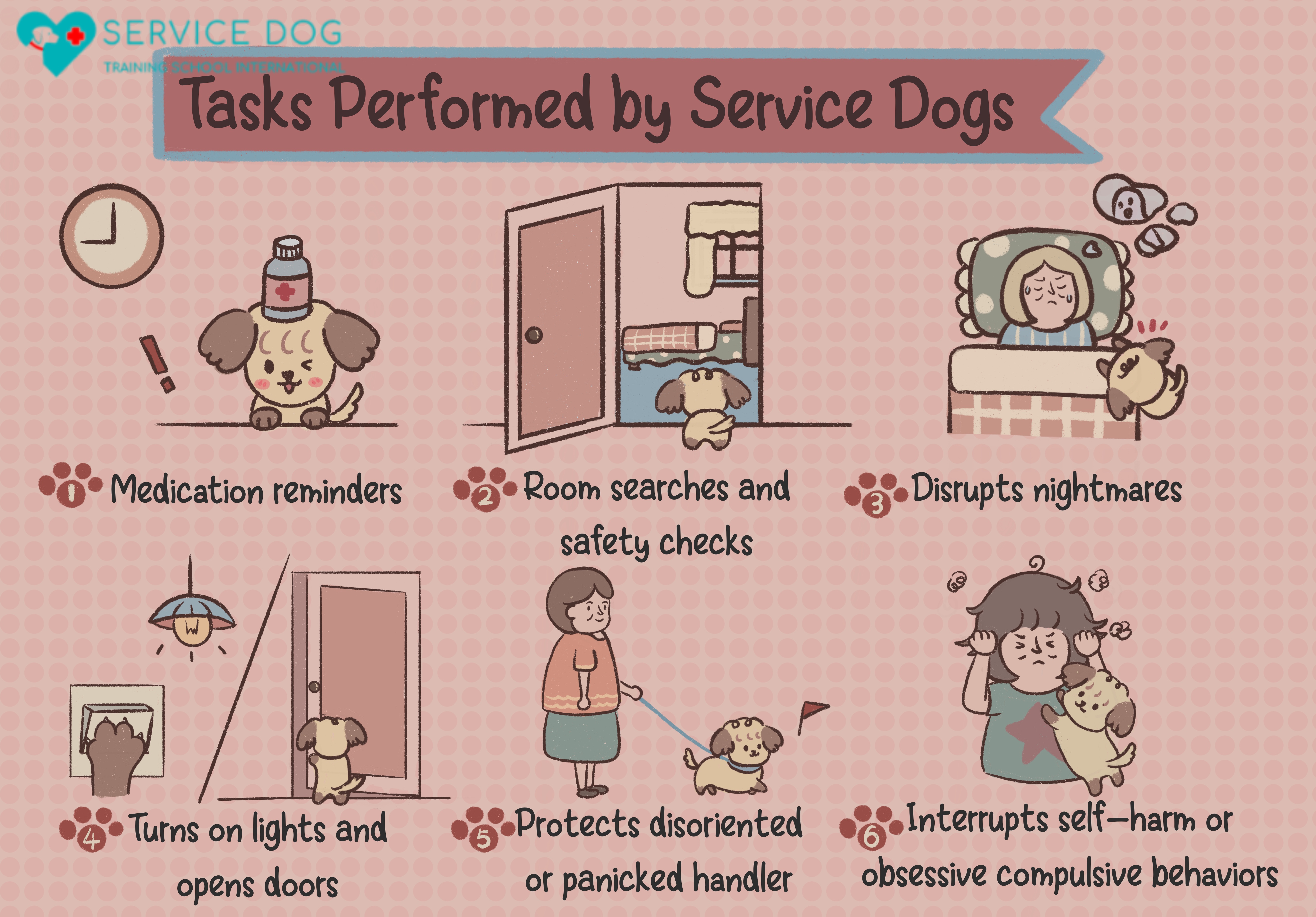
Emotional support dogs, however, are not trained to do any specific tasks. They simply just give their owners emotional support. They do not have public access like Service Dogs and do not cost any extra money.
Types of Service Dogs
1. Hearing Dogs
These dogs are trained to help people who are deaf or hard of hearing. They alert their owners when they hear important sounds, like phone calls or even smoke alarms.
2. Autism Service Dogs
These dogs are trained to help children and adults with autism go about their everyday lives and perform daily tasks. They go through lots of training for their jobs and are excellent, courageous dogs.
3. Guide Dogs
These Service Dogs are probably the most well-known. Like Hearing Dogs, Guide Dogs help people that are deaf or hard of hearing. They help them with everyday tasks and guide them to get from one place to another.
4. Mobility Assistance Dogs
These dogs assist people with mobility difficulties, such as people that are wheelchair dependent. They could help them by pulling the wheelchair, closing or opening doors, bringing them objects or turning on and off light switches, etc.
5. Diabetic Alert Dogs
These dogs have a vital role in a person's life. Their job is to alert their owner when they smell a rise or drop in their blood glucose levels. They do not replace professional equipment, but they really help in so many ways.
6. Seizure Response Dogs
These dogs help people with epilepsy or other people who are prone to seizures when they are having a seizure or immediately afterward. They can also physically remove their owners from a situation that could potentially trigger a seizure. They can help by retrieving medication, getting a person to help, getting a phone, or activating an emergency response alarm.
7. Allergy Detection Dogs
These dogs play a vital role in the lives of people with severe allergies by sniffing out the food that they are allergic to, such as nuts, wheat, eggs, etc. Their amazing noses save lives, as the owner may not know the food or object that they are allergic to is around them. If the handler goes near something they are severely allergic to, they can go into anaphylactic shock. It is common for these dogs to be paired with children as they are less likely to realize.
8. PTSD Service Dogs
These dogs are trained to help their owners with PTSD or an anxiety disorder to stay calm in a triggering situation. They may also help their owners during a panic attack by providing comfort, retrieving a phone or medication, or getting someone to help.
Can You Train Your Own Service Dog?
Yes! Although, there are a few things to consider before deciding to train your dog to be a Service Dog.
1. Is your dog an ideal breed?
A Service Dog needs to have specific traits and temperament for it to work out. Unfortunately, not all dogs carry these traits. Your service dog must have a calm temperament, be eager to please you and help you, it shouldn’t react negatively if strangers come by or try to pet it, should be able to focus on a job and ignore distractions, be energetic and behave well around other dogs.
If your dog does not have the traits listed above, and cannot learn them, they are not capable of being a Service Dog.
Here is a list of dog breed best fit for a Service Dog:
◘ Labrador Retriever
◘ Golden Retriever
◘ German Shephard
◘ Poodle
◘ Great Dane
◘ Boxer
◘ Pomeranian
◘ Border Collie
◘ Pitbull
◘ Bernese Mountain Dog
◘ Bloodhound
And more. You can check out our other article or more information on the best dog breeds for a Service Dog.
2. Training Your Service Dog
On our website, we have courses on how you can train your Service Dog at home! You can check out these courses in the ‘Courses’ section.
3. What is the best age to start training your Service Dog?
It is ideal that you begin generally training your puppy at around 8 weeks old so they can quickly master the basic commands, like sit, down, paw, and more.
Once they have mastered the basic commands, or at least are good at them, you should begin training your dog on specific tasks for service work at around 6 months old. It could take nearly 2 years for your dog to be trained to its full potential as a Service Dog, it is a long process.
4. Canine Good Citizen Test
It is recommended that your dog should pass, or be able to pass the Canine Good Citizen test to be a successful Service Dog. The skills on this test may seem simple, but they are vital in having a polite, well-behaved dog that will be great for you in every situation. Even if you don’t actually do the test itself, you should train your dog on the skills included in it.
The CGC test includes these 10 skills:
• Accepting a friendly stranger.
• Sitting politely for petting.
• Appearance and grooming.
• Out for a walk (walking on a loose leash)
• Walking through a crowd.
• Sit and down on command and staying in place.
• Coming when called.
• Reaction to another dog.
• Reaction to distraction.
• Supervised separation.
Find out more about this test on the American Kennel Club website.
5. Clicker Training
Clicker training is an amazing training technique used by many dog owners. If you are unsure what it means, you need to teach your dog that the clicker means they are doing something right and to keep doing it. It should also tell your dog that they are going to get a treat for doing it, which will make them more eager and excited to hear a click.
When starting clicker training, start with a skill your dog already knows. For example, ‘sit’. Tell your dog to sit, and the second your canine's bottom hits the floor, click! This may confuse your dog at first but immediately give a treat afterward. Repeat this a few times. Then move onto a different trick, like calling your dog to you. When you are away from your dog, even if it's slightly, call their name. When they run to you, click and give a treat immediately. Repeat this a few times. If you repeat this over time, your dog will learn the clicker means they are doing a good job, and they are going to get a yummy treat.
Now that your dog knows the clicker is good, it will be more eager to learn when it hears the click. This will be extremely helpful for you with training your dog-specific task skills. For example, if you are training your Diabetic Alert Dog to boop you with his nose when your blood sugar levels are low, take a treat in your hand and hold it where your dog can't reach. It will eventually touch you with its nose. Once this happens, click and reward. Do this step again until your dog learns that it is being rewarded for booking you with its nose.
This can be used in many different ways. Try to think of ways you can incorporate clicker training when teaching your dog tasks for service work. It is extremely useful and effective.
For more in-depth information on clicker training, check out our other article here.
How Much Does It Cost to Train a Service Dog?
A Service Dog that is already trained can cost you anywhere from $15,000 to $50,000. This is way above a lot of people’s price range, which is why a lot of people choose to train their own. Here at Service Dog Training School, we have courses to help you on your dog training journey. At the minute, our prices are from around $349-$599. Check these out online here.
These prices do not include your Service Dog’s veterinary care, food, grooming, etc, so be prepared. A Service Dog still needs to be cared for as much as an ordinary pet.
Do I Need To Register My Service Dog?
You must check with the laws that your city has in place for registering and licensing service animals in your area. Your Service Dog is not exempt from local animal control or public health requirements.
If it is not compulsory that you need to register your Service Dog in your area, only do it if you deem it necessary.
You can register your Service Dog Online or go to an appropriate licensing body.




